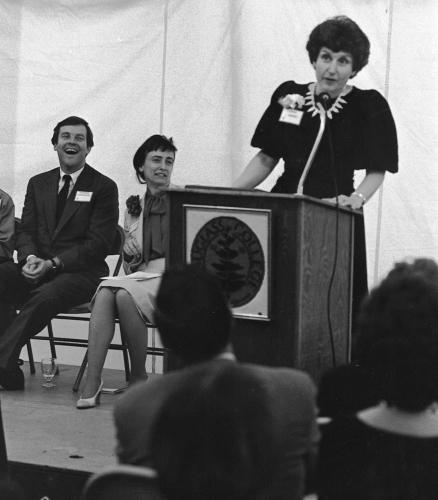
The Center for American Women and Politics (CAWP) was established in July 1971 at Rutgers University’s Eagleton Institute of Politics with a grant from the Ford Foundation (subsequently renewed for a total of seven years of general support). At the time, some observers thought it was a pointless exercise. Women held just two seats in the U.S. Senate and 13 in the House of Representatives, and no state had a woman governor. As for the other levels of office, no one had bothered to count, but the women were surely few and far between, hardly enough to consider a phenomenon worthy of study. That tiny handful of women could not possibly have a distinctive or meaningful role. And the nascent women’s movement was just beginning to consider politics as a sphere for expanding women’s presence and impact.
Since that time, CAWP has been a nonpartisan voice that is central to creating awareness and understanding of women’s political participation, as well as in expanding that participation. The Center’s programs of research, education and public engagement have both defined and enlarged the study and advancement of women in American politics. Each aspect of CAWP’s work informs and enriches the rest.
CAWP has been tracking, studying and celebrating women in public office for four decades. Through its research, public service and education programs, it highlights the importance of women's distinctive contributions to the political process. - Olympia J. Snowe, Former United States Senator
Within the growing and changing women’s political community, CAWP has been a constant for more than four decades. The Center plays many roles: researcher and scholar; keeper of the history, builder of bridges, convener of political women, educator for a variety of audiences and purposes, and non-partisan cheerleader for the women who step forward to lead.
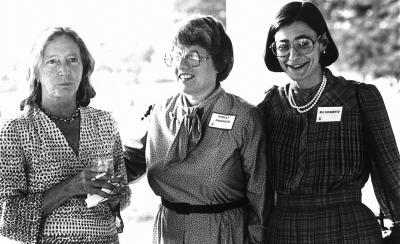
The Center’s initial co-directors were Dr. Ruth B. Mandel and Ida F.S. Schmertz. Mandel continued to lead the Center as its director for over 20 years until becoming director of CAWP’s parent organization, the Eagleton Institute of Politics, in 1995. Debbie Walsh served as acting director until Dr. Mary Hawkesworth assumed the directorship in 1998. When Hawkesworth stepped down in 2001, Walsh was appointed director, a post she continues to hold.
CAWP’s scholars are nationally noted for their leadership in establishing and expanding the study of women in politics. CAWP’s senior scholars include Professor Susan J. Carroll and Professor Kira Sanbonmatsu, both professors of political science at Rutgers-New Brunswick. Kelly Dittmar is a CAWP scholar and assistant professor of political science at Rutgers-Camden.
Journalists turn to many experts on politics, but when the subject is women in politics, CAWP is unique: a trusted source for up-to-date data, plus essential context and analysis. - The late Gwen Ifill, PBS NewsHour and Washington Week
Research
Advancing Scholarship on Women and Politics
From its beginning, CAWP has been committed to advancing scholarship about women and politics. In 1974 and again in 1976, with the goal of stimulating research about the unexplored subject of women’s political participation, CAWP announced national competitions to award Florence Eagleton Grants to scholars conducting their own research projects. The first round of these important awards, all funded by the Ford Foundation, provided six grantees with the means to explore the nature and political impact of women’s voluntary activities. The second round supported six scholars studying women and local government. These projects resulted in a variety of influential publications and promoted a network of scholars across the country who continue to explore the new research field of women and politics.
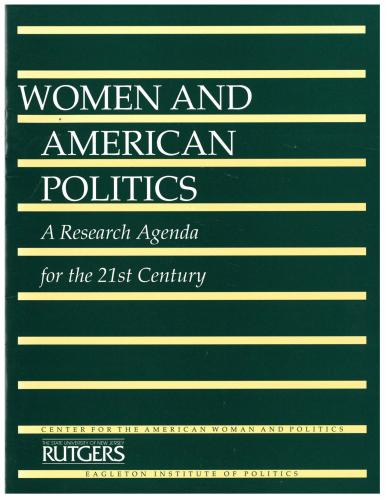
CAWP published The Political Participation of Women in the United States: A Selected Bibliography 1950-1976 (Scarecrow Press, 1977), containing citations for published and unpublished writings and work in progress on American women’s participation at mass and elite levels. With more than 1,500 entries, the bibliography reflected a growing volume of scholarly research on women in politics.
In 1994, almost a quarter-century after doubts at the time of CAWP’s founding that there was a worthwhile field of study around women and politics, the Center convened a working meeting of key thought leaders to develop a research agenda for that field. The 79 participants in the Ford Foundation-sponsored meeting included many of the top scholars studying women’s political participation, as well as political practitioners. Papers prepared for the conference were revised to reflect participant suggestions and compiled for publication by CAWP as Women and American Politics: A Research Agenda for the 21st Century (PDF).
As both a political scientist and an elected official, I value CAWP's distinctive contribution–making connections between what scholars know and what officeholders need. -- Cindy Simon Rosenthal, Director and Curator, Carl Albert Congressional Research and Studies Center, University of Oklahoma and Mayor, Norman, Oklahoma
In 2003, CAWP senior scholar Susan J. Carroll edited Women and American Politics: New Questions, New Directions,which presented a new research agenda, developed by leading scholars of American politics, suggesting directions that could fruitfully shape the study of women and American politics in the early twenty-first century. It contained reviews of existing research, but its primary focus was on important research questions, posing a challenge for the next generation of scholars.
In 2012, CAWP senior scholar Kira Sanbonmatsu compiled a research inventory with support from the Hunt Alternatives Fund’s Political Parity Project. (The inventory was updated in 2015.) Intended for scholarly and general public audiences, it reviewed current and past research about women and American politics in order to identify strategies for electing more women and research questions yet to be addressed. Parity reported that the inventory was the most visited section of their website.
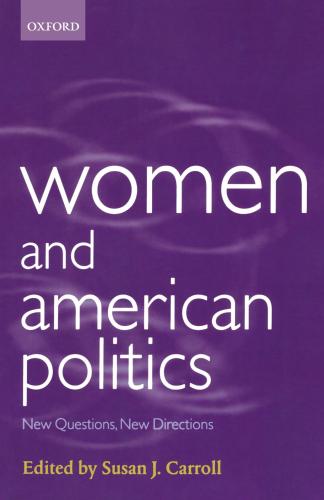
Counting, Identifying
CAWP established the National Information Bank on Women in Public Office in 1975 to serve as a clearinghouse for information about women officeholders. The Center conducted the first national census and survey of women serving in federal, state and local offices, generating the first accurate numbers of women officeholders at various levels. In the late 1970s, CAWP published two editions of Women in Public Office: A Biographical Directory and Statistical Analysis (Scarecrow Press, 1976 and 1978).
CAWP is the Federal Reserve for information about women in politics. - Eleanor Clift, Journalist and Author
Since those early days, CAWP has become the most trusted resource about women in U.S. politics; the Center provides both current numbers and their historical context including firsts, records and trends to scholars, media representatives and others who want or need the information. Since the advent of the internet, the Center’s fact sheets and data have been available online; CAWP’s website offers customizable data to answer a wide variety of questions about women in politics over time.
Research: Routes and Impact
The first study of U.S. women in elective office was commissioned by CAWP in conjunction with its 1972 Conference for Women State Legislators. That study was published as Political Woman (Basic Books, 1974) by Dr. Jeane J. Kirkpatrick.
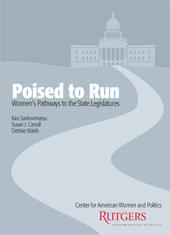
The Center’s earliest research simply identified women officeholders and compiled basic demographic data. Once CAWP had established systems for acquiring demographic information, the next task was to track women’s routes into public office and compare them with those of their male counterparts. A 1981 grant from the Charles H. Revson Foundation began that process, which led to: a series of seminal studies on women in elective and appointive offices at the state and federal levels; reports describing emerging organizations of women officeholders; and reports describing the early development of political action committees (PDF) focused on funding women candidates.
Among the reports in the first Revson-funded series was Women Make A Difference (PDF), CAWP’s first attempt to trace the impact of women in public office. As the growing numbers of women in office made it both interesting and feasible to explore that subject, Revson awarded another major grant in 1986 that funded CAWP to conduct extensive research and commission scholars elsewhere to explore various aspects of the question of impact.
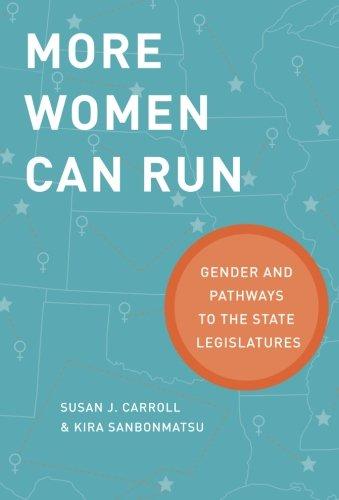
A new study of routes to elective office, conducted in 2008, provided the basis for Poised to Run: Women's Pathways to the State Legislatures (PDF), a monograph published in 2009. The research, supported by the Barbara Lee Family Foundation, the Susie Tompkins Buell Foundation, Wendy Mackenzie and others, identified steps necessary to get more women to run for office.
Published in 2013, More Women Can Run: Gender and Pathways to the State Legislatures (Oxford University Press, 2013), written by CAWP senior scholars Susan Carroll and Kira Sanbonmatsu, draws on the CAWP surveys of women legislators conducted in 1981 and 2008 and follow-up interviews after the 2008 survey to extend our understanding of gender differences in pathways to the legislatures, offer some possible explanations, and provide insight into new strategies for political practitioners concerned about women's political equality.
Research: Candidates and Campaigns
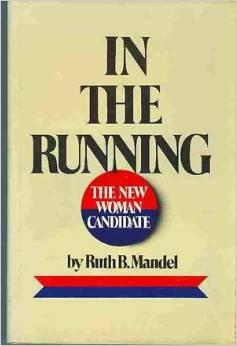
Women candidates and their campaigns have been the subjects of work by several CAWP scholars. In the Running: The New Woman Candidate (Ticknor and Fields 1981; paperback Beacon Press, 1983) by the then-CAWP director, Ruth B. Mandel, was the product of research begun in 1976 and stories collected by a team of journalists working on the project. It described the emergence of women as candidates for elective office in the United States in the 1970s. Susan J. Carroll authored Women as Candidates in American Politics (Indiana University Press, 1985, second edition 1994), examining political parties' recruitment of women candidates, the factors that affect the outcomes of women's primary election campaigns, officeholding ambitions of women candidates, and women candidates' views on women's issues. Kira Sanbonmatsu published Where Women Run: Gender and Party in the American States(University of Michigan Press, 2006), looking at where and why women run and how parties can help or hinder them. Carroll co-edited, with Richard Fox of Loyola Marymount University, several editions (2005, 2009, 2013) of Gender and Elections: Shaping the Future of American Politics (Cambridge University Press); each volume contained chapters by scholars about a variety of aspects of the role of gender in American electoral politics. Kelly Dittmar’s book, Navigating Gendered Terrain: Stereotypes and Strategy in Political Campaigns(Temple University Press, 2015) examines how gender influences the campaign strategy and behavior of candidates and how candidates' strategic and tactical decisions can influence the gendered nature of campaign institutions.
Anticipating the 2016 presidential election, when both women candidates and women voters would be central to the discussion, CAWP teamed with the Barbara Lee Family Foundation to create Presidential Gender Watch 2016, a nonpartisan project to track, analyze and illuminate gender dynamics in that election. The initiative draws on the research and expertise of both partner organizations, as well as other experts, to further public understanding of how gender influences candidate strategy, voter engagement and expectations, media coverage, and electoral outcomes in the race for the nation’s highest executive office.
In the wake of the Supreme Court’s Webster decision returning to the states greater power to regulate abortion, CAWP undertook research in the late 1980s and early 1990s examining the impact of the abortion issue on electoral politics.
Equality Deferred: Women Candidates for the New Jersey Assembly 1920-1993 was written by historian Richard P. McCormick and Rutgers administrator Katheryne C.. McCormick in 1994. Published by CAWP, it provided a history and analysis of women’s candidacies for the legislature in the Garden State.
Women as Voters
Through its election-year Women’s Vote Watch, CAWP has tracked and analyzed polling data related to voter turnout, the gender gap, and the women's vote, issuing fact sheets and reports that provide context for news stories about gender and voting. CAWP has been a leader in defining, identifying and interpreting the gender gap and its relationship to the women’s vote.
Women and Term Limits
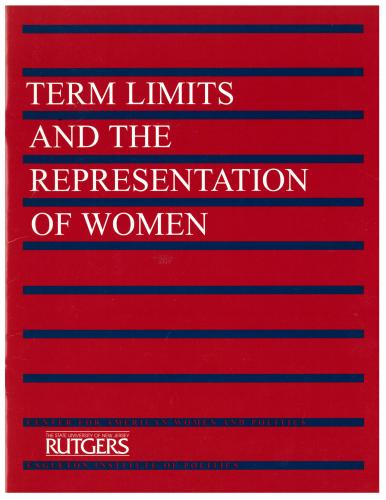
In 1999, CAWP convened a meeting to examine preliminary data on the impact of term limits on women’s representation and to explore how women might capitalize on political opportunities created by term limits. (See Term Limits and the Representation of Women (PDF), by Mary Hawkesworth and Katherine E. Kleeman and subsequent research by Professor Susan Carroll and Krista Jenkins, including "Unrealized Opportunity? Term Limits and the Representation of Women in State Legislatures" (PDF) in Women & Politics and "Increasing Diversity or More of the Same? Term Limits and the Representation of Women, Minorities, and Minority Women in State Legislatures" (PDF) in National Political Science Review. Professor Carroll also authored "The Impact of Term Limits on Women"(PDF) in Spectrum: The Journal of State Government.
Convening Political Women
In keeping with pioneering work on state legislative reform conducted by the Eagleton Institute of Politics, CAWP convened the historic first national gathering of elected women, the Conference for Women State Legislators (PDF), in May 1972. Funded with a grant from the Carnegie Corporation of New York and held in the Pocono Mountains, the conference focused on the backgrounds, attitudes and experiences of women elected to state legislatures. The Pocono meeting became the basis for political scientist Jeane Kirkpatrick’s Political Woman (Basic Books, 1974), a landmark book commissioned by CAWP.
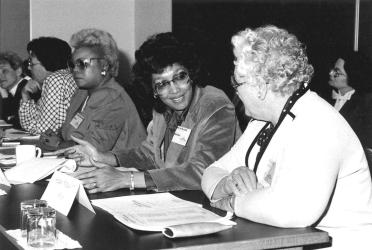
In 1982, CAWP held a tenth anniversary Conference for Women State Legislators (PDF) on Cape Cod. Like the first conference, it was supported by the Carnegie Corporation of New York, with additional corporate contributions. The conference focused on women’s legislative caucuses and the impact of public policies on women.
In response to requests from legislators around the country at and after the 1982 conference, CAWP convened the first national Forum for Women State Legislators in 1983 at the Hotel del Coronado near San Diego. It was the largest meeting of elected women to date; all 991 women state legislators were invited to attend and more than a third of them came, along with other women officeholders, party and organization leaders, women from the business community, scholars and journalists. Participants explored public policy issues, the special concerns of women who hold elected office, and the future of women in legislative leadership. Once again, funding came from the Carnegie Corporation of New York and from corporations, foundations, and unions.
That first Forum for Women State Legislators became the template for four more, in 1987, 1991, 1995 and 2001; all but the last were at the Hotel del Coronado, with the last in Dana Point, California. Like the earlier Forums, each had an invitation list including every woman state legislator, and each brought hundreds of elected women together with issue experts, activists, international guests, student interns, and corporate, foundation and union supporters. The 1991 Forum, held shortly after the contentious Senate hearings on the Supreme Court nomination of Clarence Thomas, drew national attention with a roundtable on sexual harassment and public policy featuring Professor Anita Hill and other law professors.
In addition to the national Forums, CAWP regularly convened other groups of elected women. These included three Forums for Newly Elected Women State Legislators (1989, 1997 and 2003), a regional New England Forum for Women State Legislators (2005), and meetings about women’s PACs (1982), Women in Legislative Leadership (PDF) (1985), and leaders of national organizations of women public officials (1989, 1991).
Working with a group of New Jersey elected women, CAWP helped to establish the New Jersey Association for Elected Women Officials in 1979. The bipartisan statewide organization undertook education, information-sharing and mutual support projects, reaching women officeholders across levels of government. While that organization no longer exists, it was the forerunner of New Jersey Women in Municipal Government, an organization affiliated with the New Jersey League of Municipalities.
In 1978, grants from the U.S. Department of Housing and Urban Development funded early CAWP work focused on municipal officials, including a study of women in municipal management (PDF) and an analysis of the development of organizations of women public officials (PDF). With HUD funding, CAWP conducted skill-building workshops at meetings of the National League of Cities, the International City Management Association, and other organizations of government officials.

Educating and Training
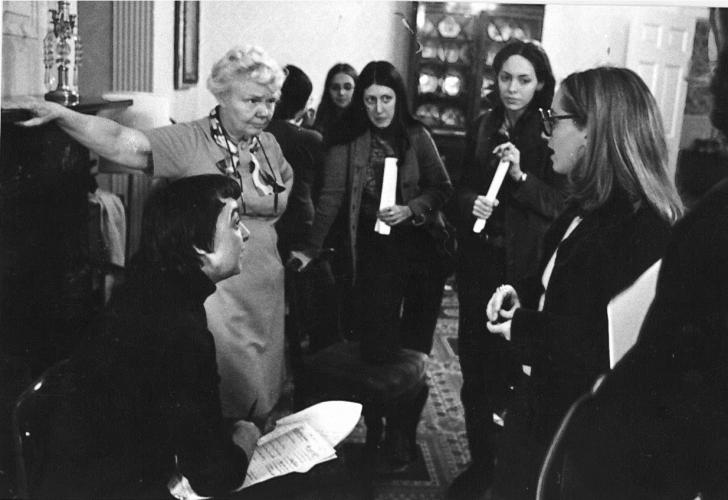
Educating women about public leadership and training them in specific political and leadership skills became part of CAWP’s mission from the earliest days, consistent with the intent of Florence Peshine Eagleton, whose bequest founded the Eagleton Institute of Politics.
The Visiting Program in Practical Politics was an experimental model piloted by CAWP at Rutgers University in 1973. It brought a bipartisan team of two women state legislators to campus as politicians in residence to teach an undergraduate course.
Trenton Lobbyist Nancy H. Becker wrote a handbook for CAWP, Lobbying in New Jersey, in 1978. Underwritten by the state’s Division on Women, a unit of the New Jersey Department of Community Affairs, the book explained lobbying for newcomers to the process.
CAWP’s director and colleagues from the National Women’s Education Fund and Wells College worked with college presidents and administrative leaders to design a set of programs suited to women’s colleges and a national consortium to share the innovative program plans. Under a grant from the Carnegie Corporation of New York, they established the Public Leadership Education Network (PLEN) in 1978. Five women’s colleges tested models including a politician-in-residence program, skills workshops, public policy issue conferences, leadership courses for Black women, and internships with women lawmakers. In later years, the Network expanded to more women’s colleges and then shifted its focus to Washington-DC based programs to prepare college women for leadership in the public policy arena.
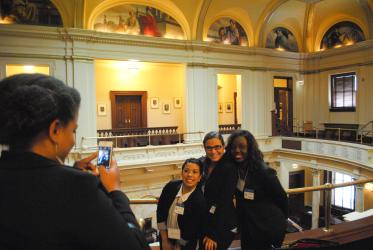
CAWP established NEW Leadership® (National Education for Women’s Leadership) in 1991 as a series of annual national summer leadership institutes for college women. After the initial grant from the W.K. Kellogg Foundation ended, CAWP shifted from a single national program based at CAWP to state-based institutes at colleges and universities around the country that serve students from each state or region. With a subsequent Kellogg grant, CAWP created the NEW Leadership® National Network; network partners observe the flagship program, NEW Leadership® NJ, and then, with CAWP assistance, develop their own programs based on CAWP’s model.
NEW Leadership® had a huge impact on my life and changed my career goals, opening new options and opportunities for me. - NEW Leadership® participant, Class of 2004
Ready to Run® is CAWP’s non-partisan campaign training program to encourage and train women to run for elective office, position themselves for appointive office, work on campaigns, or become active in public life in other ways. CAWP created the program in 1998 and offers it annually in New Jersey. Interest from other states in replicating the program led to the Ready to Run®National Network, through which state partners adjust CAWP’s model to fit their own political cultures. Ready to Run® New Jersey features a diversity initiative consisting of pre-conference programs aimed at increasing the participation of women of color in politics: Elección Latina; Run Sister Run: Women of the African Diaspora Changing the Political Landscape; and Rising Stars: Educating Asian American Women for Politics.
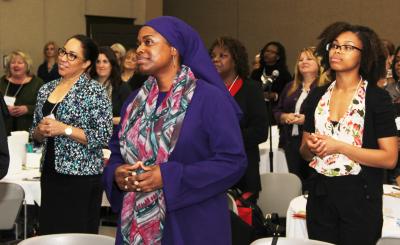
With the support of the Hunt Alternatives Fund, CAWP built an interactive national map that identifies resources available to women interested in running for office, working on political campaigns, or holding appointive office. The map helps potential officeholders find leadership development and campaign training programs, political action committees, and organizations and programs committed to supporting and encouraging women in politics.
Responding to a call to action from President Barack Obama in a 2011 address to the UN General Assembly, CAWP worked with the White House and the U.S. Department of Education to convene the White House Conference on Girls’ Leadership and Civic Education. The April 2013 conference was one element of the federal government’s commitment to promote political and economic equality for women and girls through a new Equal Futures Partnership. In the wake of the conference, CAWP established Teach a Girl to Lead® (TAG), which provides the tools and resources to help young people rethink leadership. The project was created to inspire girls and young women to follow in the footsteps of women leaders, past and present and to make women’s political leadership visible to America’s youth, both boys and girls. Using a gender lens, TAG offers a fresh way of looking at public leadership that asks where women are, where they have been absent by design or by custom, and how we can reframe our ideas about who leads. Through a rich and growing set of online resources, TAG serves educators, leaders of youth-serving groups, media outlets that target young audiences, and parents.
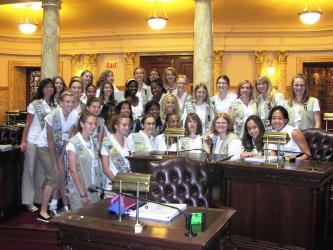
Pathways to Politics, a collaboration between CAWP and the local council of Girl Scouts of the USA, brought teen-age Girl Scouts from around the nation to CAWP for two weeks to learn about women's political participation. The program was offered in 2004, 2006 and 2008 under the national Girl Scout "Destinations" program.
Making Women's Leadership Visible
In 1984, CAWP produced a 60-minute documentary film, Not One of the Boys, which aired nationally on the PBS series Frontline. It examined 1984 as both an ordinary and extraordinary moment for women in American politics, considering the progress women were making and the obstacles they were encountering after more than a decade of increased involvement in political life.
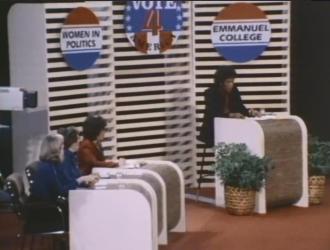
Since 2000, the New Jersey legislature has entrusted CAWP with the Senator Wynona Lipman Chair in Women’s Political Leadership, created to honor the legacy of the first African American woman in the New Jersey State Senate. Lipman Chair funding is used to inspire women to follow in the Senator’s footsteps.
You can't make change without good information. CAWP's work tells activists how women make a difference, what factors stand in the way of electing more women, and what we must do to get more women into office. - Donna Brazile, Political Commentator
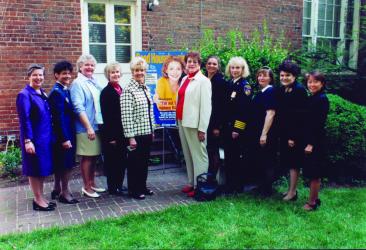
From 1998 through 2005, Good Housekeeping magazine and CAWP, with funding from the Ford Foundation, presented annual Good Housekeeping Awards for Women in Government. The awards recognized elected or appointed officials, career civil servants, or members of the military whose work exemplified how government improves people's lives.
The New Jersey Bipartisan Coalition for Women’s Appointments (BCWA), a statewide, bipartisan group of prominent women and organizations, convened for the first time in 1981 and in later election years with races for an open gubernatorial seat. Its purpose is to ensure the placement of women in key positions throughout state government by creating the expectation within both major parties and the campaigns of their gubernatorial candidates that women will be included in significant state government positions. Toward that end, BCWA provides newly elected governors with a “talent bank” of resumes from New Jersey women interested in appointments. Other states have adopted the BCWA model.

